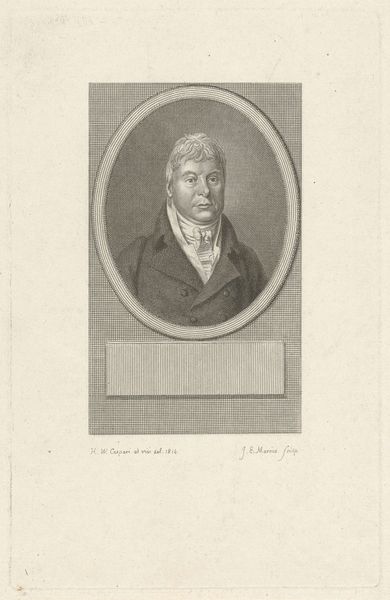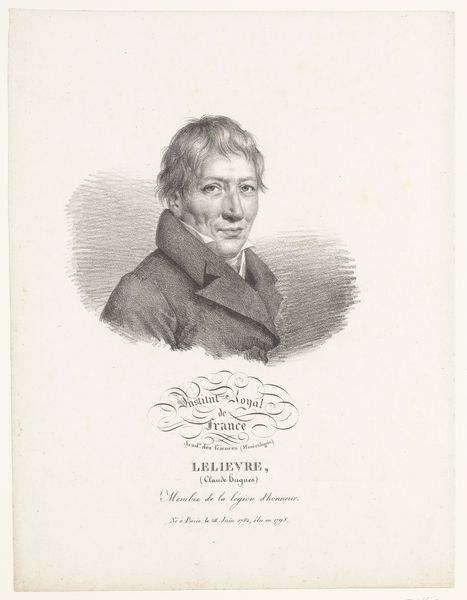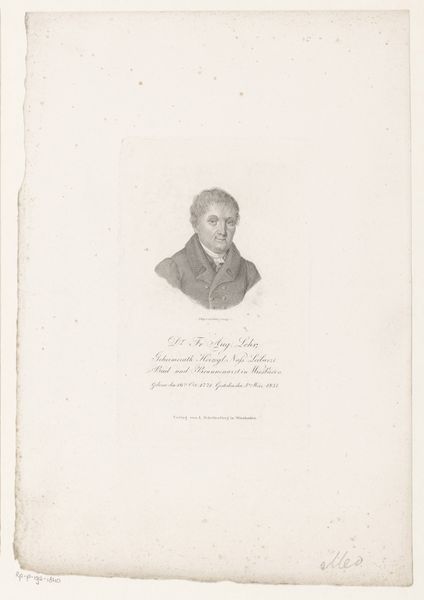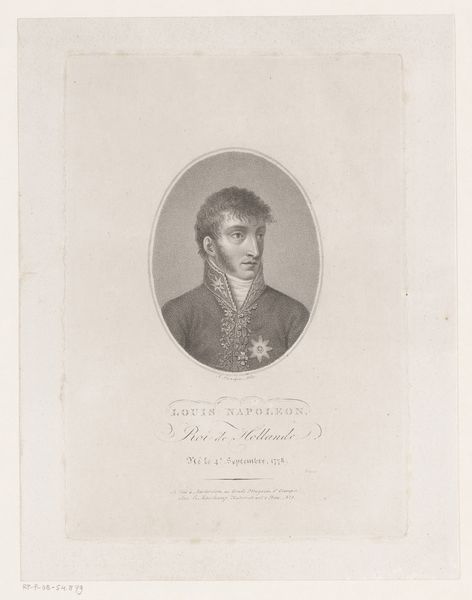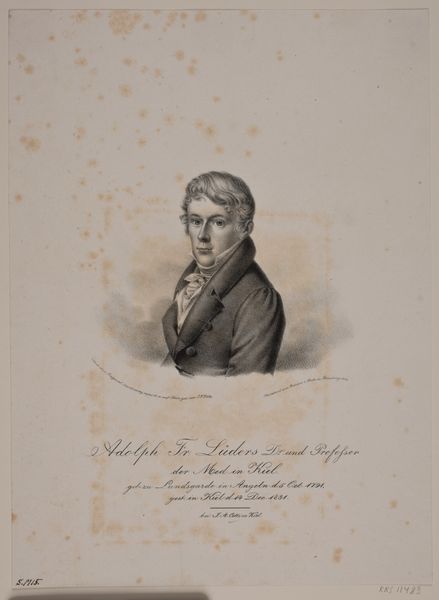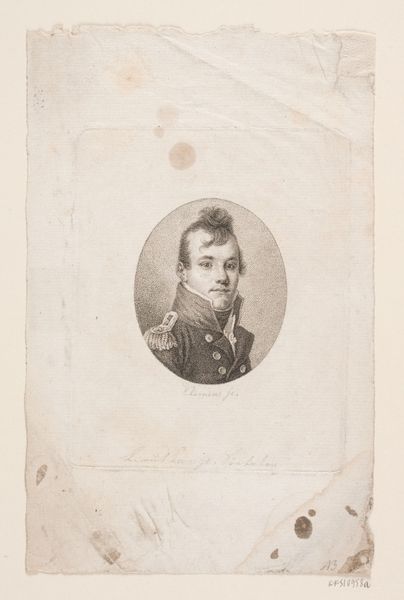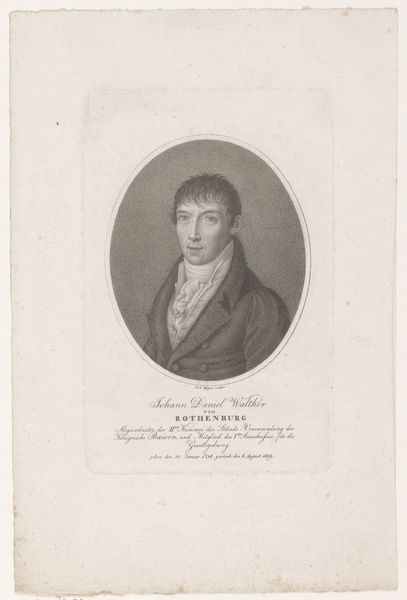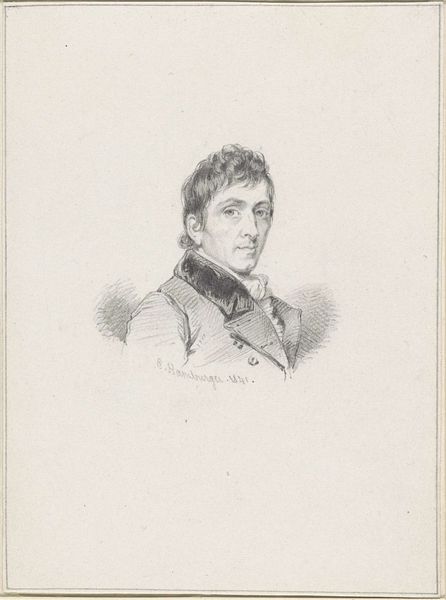
Dimensions: 158 mm (height) x 108 mm (width) (plademaal)
Curator: Immediately, I get this feeling, almost a wisp, like an encounter with a ghost from a well-ordered past. There's a severity there, but it's softened somehow, what do you see? Editor: It’s definitely reserved. We're looking at "Adolf Wilhelm Schack von Staffeldt", an engraving by A.P. Madsen created in 1867. What draws me in is the oval frame and the resolute gaze. It's a very Neoclassical rendering, playing into that era’s fascination with capturing ideal forms, yet he feels quite grounded and real to me somehow. Curator: Oh, absolutely grounded! And what is particularly curious is the almost…photographic quality captured through etching, particularly around the man's hair. It’s wild in that buttoned-up oval portrait. Look closely: you can see that detail in every line. Is that the hint of Romanticism seeping in? Editor: It could very well be. His almost severe expression, however, brings something else to my mind, maybe a cultural memory—a symbol. In a way, portraiture like this often represented social status, almost like an ancestor icon, declaring both power and belonging. Notice that despite his side-facing pose, he engages the viewer… his status in society is self-evident! Curator: A stoic man staring out from the rigid framework of society! But it's also tinged with this quiet, melancholic humanity—the kind you might expect from a print, given the medium lends itself to endless replication and almost mass ownership of his visage. Editor: Exactly. This image, like many portraits of the time, freezes a moment in time, which creates, perhaps paradoxically, a feeling of immortality. Looking at him here in the twenty-first century... the past feels incredibly close. It has been recorded for posterity and now preserved for us to analyse. Curator: In an engraving there is this beautiful tension, a dance between stark linearity and ethereal delicacy, especially given it’s a copy of an older portrait from the era, meaning that we lose a sense of depth even more, to view it across centuries. Perhaps the past, the image, always feels like it's disappearing? Editor: Perhaps. It has made me look with new eyes, that’s for sure. Thank you for your personal reflections about the image. Curator: Absolutely. I now see him less as a historical figure and more as an individual—frozen in ink but forever peering out.
Comments
No comments
Be the first to comment and join the conversation on the ultimate creative platform.

